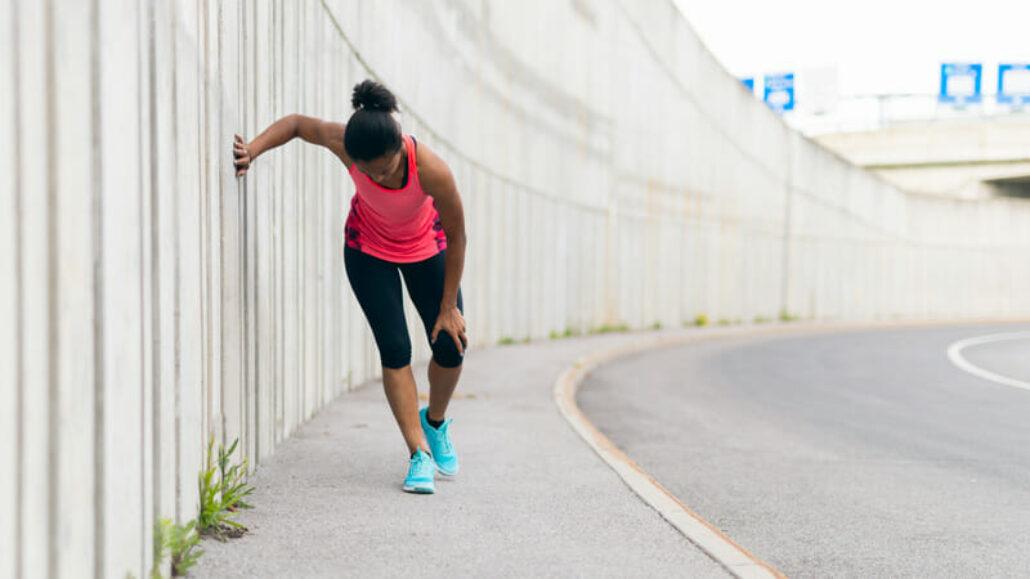It’s no fun to suffer an injury, but understanding what to expect during the recovery process can help. We walk you through the steps from injury to full recovery.
Injury is frustrating, whether you hurt yourself on the playing field or running track, in a misstep as you go about your daily routine, or as the result of a fall. We can’t turn back the clock to prevent damage that’s been done, but we can walk you through the stages of recovery, so that you’ll know what to expect, and what you can do to maximize your recovery.
Rehabilitation from an injury follows a series of steps from the time of injury until you can resume all of the activities that you love. Of course, your entire recovery process should be designed and monitored by your physician and physical therapist.
The acute phase of injury
In the immediate aftermath of an injury, your focus is on minimizing swelling. Follow the RICE formula for recovery: Rest, Ice, Compression, and Elevation, and limit your activities. If your injury is severe, your treatment at this stage may involve surgery, bracing, or casting.
Maintain overall condition
While your injury is healing, your physician and therapist will work with you to identify ways for you to safely stay fit. A runner with an injury may switch to running in water. A patient in a cast may exercise healthy muscles through strength training. Don’t delay exercise until you are healed—you’ll be further ahead if you stay in shape during the healing process.
Regain range of motion and strength in your injured limb or joint.
For most injuries, gentle range of motion exercises can begin almost immediately after injury. Your physician and therapist will create a plan for you, and monitor your progress.
Functional drills
Once your strength has returned to normal in your injured limb or joint, you will start doing specific exercises focused on balance and agility. These exercises will help you reclaim any coordination that you may have lost as a result of the injury. If you have a lower extremity injury, expect to be doing some brisk walking, rope jumping, hopping, or light jogging. If your injury is in an upper extremity, you’ll start doing some light throwing. You may feel terrific at this stage, but you are probably only about 75 percent recovered. It’s important to take it slow.
Sport-specific movement exercises
You’ll be started on movement patterns specific to your sport only after you have progressed with range of motion, strength, endurance, and agility, and are tolerating functional drills. Your therapist will monitor your progress to ensure that you don’t re-injure yourself, and may have you wear protective tape or supports during this stage.
Return to play
Before you re-engage with your sport, or your normal activities, your physician and therapist want you to be healed to the point where it is very low risk of additional harm. In this final phase, as you resume your activities, give special attention to adequate warm up prior to your activity, and icing afterwards, as appropriate.
Our sports medicine teams monitor advances in medicine that will help athletes back to a 100 percent recovery. Ideally, as quickly as possible and without sacrificing safety. When you commit to these steps, and have them monitored by your medical team, you’ll be on your way to a healthy and safe recovery.
Summit Orthopedics offers comprehensive sports medicine expertise
From Olympians to pro athletes to kids in youth sports and those that just want to be more active—Summit Orthopedics delivers expert care by fellowship-trained sports medicine physicians. If you are recently injured or concerned about ongoing pain, Summit Orthopedics sports medicine specialists have the expertise to evaluate your discomfort and develop a plan to quickly and safely help you get back to being active.
Start your journey to stronger, healthier athletic condition. Find your sports medicine expert, request an appointment online, or call us at (651) 968–5201 to schedule a sports medicine consultation.
Summit has convenient locations across the Minneapolis-St. Paul metro area, serving Minnesota and western Wisconsin. We have state-of-the-art centers for comprehensive orthopedic care in Eagan, MN, Vadnais Heights, MN, Plymouth, MN, and Woodbury, MN, as well as several additional community clinics.
More resources for you
- How Is Jumper’s Knee Treated?
- Tips To A Speedy Recovery From Sports Injuries
- Hockey Strengthening Exercises to Try Before You Head Out on The Ice
